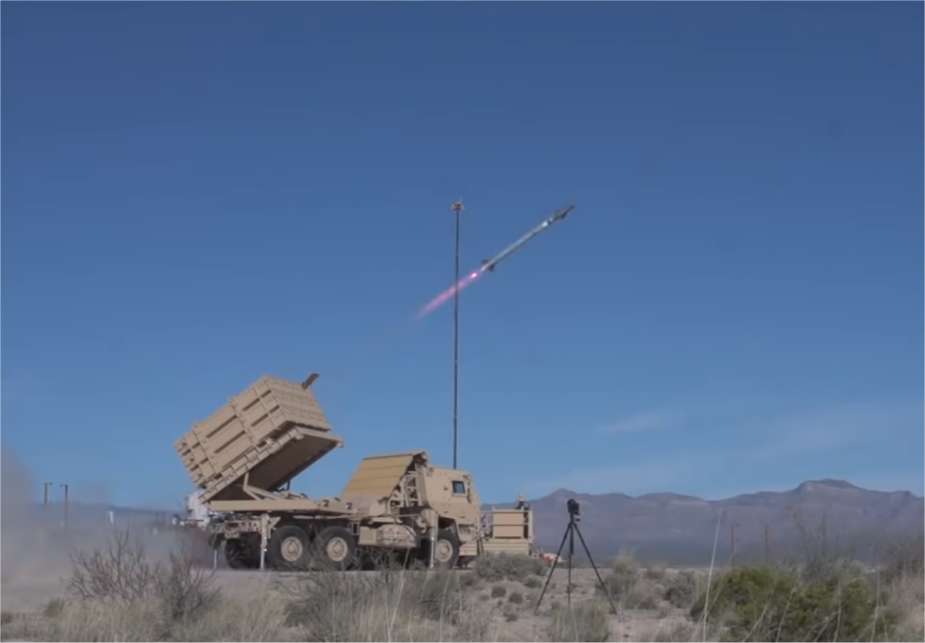US Army calls for development of anti-missile system part of IFPC Inc 2 program
On 26 January 2024, the U.S. Department of Defense called for the development of a new anti-missile defense system as part of the IFPC Inc 2 program. This program aims to improve defense capabilities against subsonic cruise missiles and other aerial threats. With a budget of $237.38 million over 2.5 years, this system will combine the range of the AIM-120D missile with the compactness of the AIM-9X, thus offering a more effective solution against modern aerial threats.
Follow Army Recognition on Google News at this link

IFPC Inc2-1 (Indirect Fire Protection Capability Increment 2) AIM-9X missile launcher (Picture source: Wikimedia)
This new anti-missile defense system, part of the IFPC Inc 2, is expected to combine the exceptional capabilities of the AIM-120D missile, known for its range exceeding 180 kilometers, with the compactness of the AIM-9X missile. This unique combination allows the system to benefit from a larger magazine capacity, thus increasing its operational efficiency.
As a reminder, the U.S. Army's IFPC Inc 2 (Indirect Fire Protection Capability Increment 2) program includes several projects aimed at protecting sites against aerial threats, with a particular focus on supersonic interceptors and directed energy weapons (lasers and high-power microwaves). Among these projects is Dynetics' Enduring Shield air defense missile launcher, coupled with Raytheon's ground-launched AIM-9X Sidewinder missile. The current goal is to find a second kinetic interceptor that can also be launched from Enduring Shield, capable of targeting supersonic cruise missiles and large-caliber rockets, as well as unmanned aerial systems and subsonic cruise missiles. The program also plans to develop high-energy laser weapon systems to protect fixed and semi-fixed sites against threats such as cruise missiles, rockets, artillery, mortars, and UAS.
This new system's primary task will be to effectively engage and neutralize cruise missiles, both subsonic and supersonic, thus playing a key role in ensuring comprehensive 360-degree protection. This capability is of paramount importance, particularly for defense against a variety of threats, including unmanned aircraft systems (UAS) and large-caliber rocket threats, which pose an increased risk to fixed and semi-fixed strategic sites.
Regarding capability expectations, the interceptor must be designed to integrate into an open system architecture, implying extended flexibility and compatibility with current and future defense systems. Moreover, it is expected that this system can achieve lethal kinetic effects against specific targets, focusing particularly on threats posed by subsonic and supersonic cruise missiles. Finally, particular attention is paid to this system's ability to evolve, minimizing the need for a major system overhaul while adapting to changes in the threat landscape and technological advances. This approach aims to ensure that the investment in this interceptor system remains relevant and effective in the long term, facing the constantly evolving security challenges.
This development comes in the context of increasing aerial threats and aims to strengthen the defense capabilities of the U.S. military. The implementation of this system reflects the military's ongoing commitment to modernizing its equipment to meet current and future security challenges as we can observe in Ukraine and Israel.
The IFPC Inc 2 is a strategic response to complex aerial threat scenarios, ensuring enhanced protection of sites and armed forces. With this system, the U.S. military should be equipped with a crucial defense tool for its national security.
- Hits: 2824
















